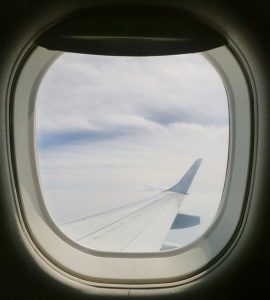
Have you ever looked out the window of a commercial airliner, only to discover a pattern of small cracks in the glass?
Upon seeing these cracks, you may assume the window is no longer safe. After all, commercial airliners have pressurized cabins. At cruising altitude, the air pressure inside of an airliner’s cabin is higher than that of the air outside of the cabin. If an emergency door opens unexpectedly or a window is breached, the air inside of the cabin will attempt to equalize its pressure with the air outside of the cabin.
What Is Crazing?
The cracks that form in aircraft windows is typically the result of crazing. Crazing is a phenomenon that involves the formation of small, hairline fractures in the surface of an object — the keyword being the “surface” of an object. It’s particularly common with aircraft windows.
Crazing can manifest in different ways. It may initially appear as just a few small scratches. Over time, these superficial scratches may spread. Fortunately, crazing is typically an aesthetic issue; it does not compromise the integrity of aircraft windows. Rather, the scratches or cracks are limited to the surface of the windows and are unable to penetrate completely through the glass.
What Causes Crazing?
Most aircraft windows consist of two panes. The outermost pane is thicker and, thus, bears the force of the cabin pressure. The innermost pane, on the other hand, is thinner and does not bear the force of the cabin pressure. Instead, there are small holes in the innermost pane through which air passes. Air from the cabin will pass through these holes before stopping at the outermost pane.
While crazing can occur on either of these two panes, it’s most common on the outermost pane. This is due to the fact that the outermost pane bears the force of the cabin pressure. Each time a commercial airliner ascends, its cabin will pressurize. And when the airliner descends to land, its cabin will depressurize. The ongoing cycle of pressurization and depressurization can eventually lead to stress fractures on the surface of the airliner’s cabin windows.
How Crazing Is Treated
There are several solutions available for crazing, one of which is to apply a special coating. There are coatings available for aircraft windows, some of which are designed to protect against crazing and similar forms of superficial damage.
In addition to applying these special coatings, airlines may regularly remove and polish their cabin windows. Polishing will eliminate any superficial cracks and restore the windows back to their original appearance.



